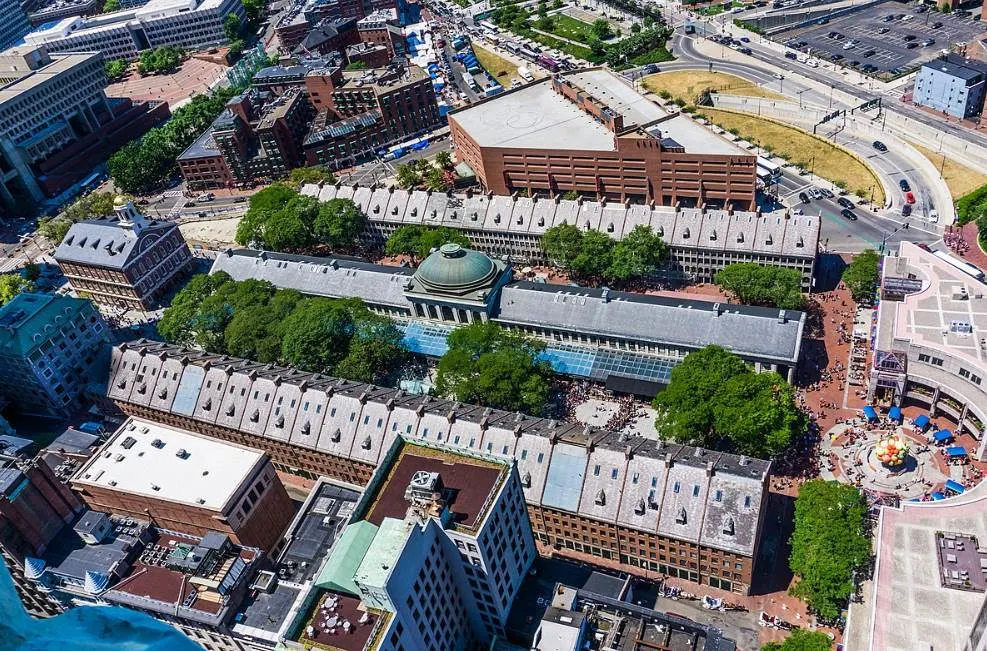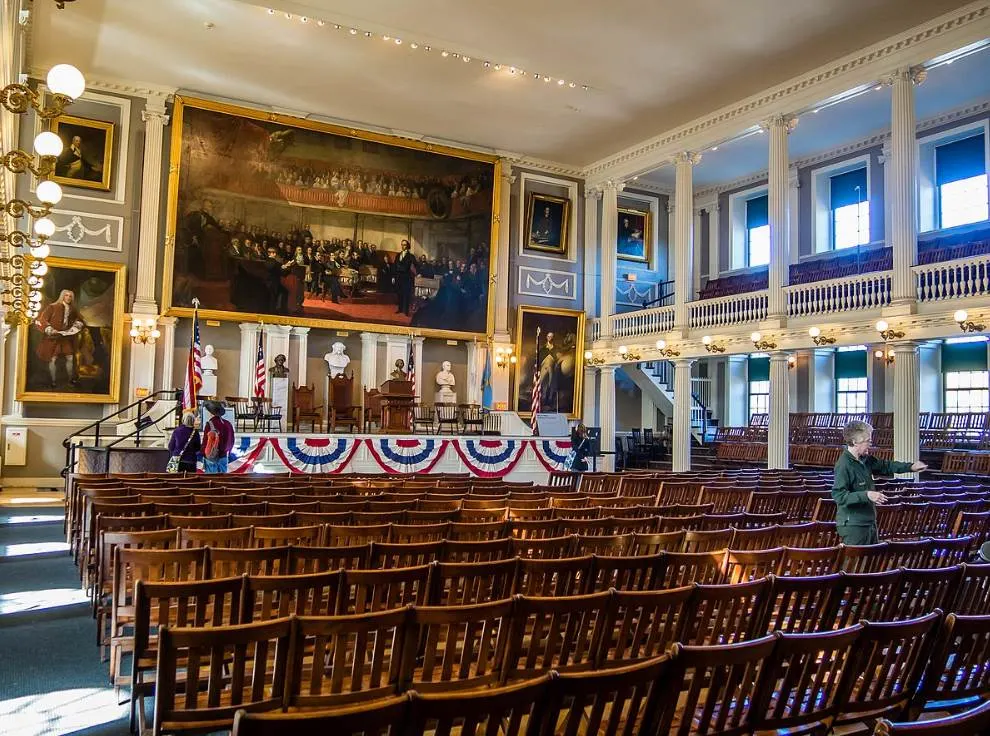If you want to admire great Georgian architecture in combination with an incredible dose of history, then this remarkable building in Boston should be on your bucket list.
It has a history that predates the foundation of the United States by well over 3 decades and still serves as one of the most popular attractions in the country today.
Let’s take a closer look at some of the most interesting facts about Fanueil Hall, a building that simply breathes history.
1. It’s located in the Government Center of downtown Boston
Faneuil Hall is a historic building located in the Government Center of Boston, an area inside downtown Boston that borders the city’s iconic Waterfront.
City Hall Plaza is located just west of the building. As its name suggests, this famous square faces Boston City Hall, the epitome of Brutalist architecture that has been heavily criticized.
Today, the building still serves its purpose as a marketplace and meeting hall and it’s one of the most visited landmarks in the city.
The main reason is the fact that it played a major role in the Independence of the United States in the 18th century. Today, it’s managed by the National Park Service.

2. The building was named after a slave trader and philanthropist
It’s remarkable that we can refer to a man who became filthy rich from the slave trade as a philanthropist, but in the technical sense, that’s what Peter Faneuil (1700-1743) was.
It was Faneuil who suggested building a meeting hall and pubic marketplace in the heart of Boston in the early 1740s.

He eventually provided the funds to erect the building which happened in 1742 in a location known as Dock Square.
This means that Faneuil Hall was completed 34 years before the United States became an independent country which is quite amazing.

3. The first building burned down but was quickly rebuilt in the 1760s
The building was designed by a Scottish artist named John Smibert (1688-1751) in the typical style of an English marketplace.
The building incorporated Georgian architecture and the ground floor was an open marketplace. The meeting hall was located on the first floor of the building.
Unfortunately, this building burned to the ground in 1761 with only the exterior brick walls standing. It was, however, quickly rebuilt in 1762 in a project that was funded by the town of Boston.

4. The Georgian-style building was greatly expanded in the early 19th century
The building was briefly used as a theater during the British occupation of Boston in 1775 but quickly resumed serving its purpose as a marketplace and meeting hall.
By the early 19th century, the building became too small and an American architect named Charles Bulfinch (1763-1844) was hired to expand Faneuil Hall.
This is what happened during this project:
- The number of bays of the building was increased from 4 to 7.
- The open arcades on the ground floor were enclosed.
- The distinctive cupola on top of the building was moved to the other side.
- A third floor was added which significantly increased the building’s height.
- The lower two floors were decorated with Doric pilasters and the upper floor with Ionic pilasters.
Although most elements of the Georgian style were preserved, some elements of Neoclassical architecture were integrated, a popular style at the time of this expansion phase.

5. It’s one of 4 buildings that make up the Faneuil Hall Marketplace
Faneuil Hall is the most famous building in the Faneuil Hall Marketplace. This festival marketplace consists of 4 historic buildings with both interior and exterior shopping and dining facilities.
The North and South Market buildings flank the amazing Quincy Market, a Neoclassical structure that was completed between 1824 and 1826.
This historic building was named in honor of mayor Josiah Quincy (1772-1864), a man who managed to construct this building without increasing debt or put taxes.
The central dome of the building covers the marketplace’s food court which makes it an amazing place to have lunch or dinner.

6. It’s the home of the largest military organization in North America
The building is used as a marketplace and meeting hall but it has another purpose as well.
The fourth floor serves as the headquarters of the oldest chartered military organization in North America and the third-oldest of its kind in the world.
This organization is called the “Ancient and Honorable Artillery Company of Massachusetts” and was chartered in 1638.
Apart from housing the armory, library, offices, and commissary, it also houses the organization’s museum which is free to visit.

7. The building was designated a National Historic Landmark in 1960
The fact that this building was originally constructed in 1742 makes it one of the most important historic buildings in the United States.
It experienced the British occupation of Boston and was an important place for political activists to hold speeches in favor of independence.
Because of its incredible historic value, the building was designated a National Historic Landmark in 1960 and it was added to the National Register of Historic Places in 1966.

8. It’s one of the stops on Boston’s famous Freedom Trail
Faneuil Hall is sometimes referred to as “The Cradle of Freedom.” It’s here that important political activists such as Samuel Adams and James Otis held important speeches.
The eastern façade of the building faces an area that is part of the Boston National Historical Park.
Here you can find a late-19th century bronze statue of Samuel Adams, one of the Founding Fathers of the United States.
This area is also part of the so-called Freedom Trail. This path has a length of about 4 kilometers (2.5 miles) and runs through Boston and there are 16 stops of it.
All of these have specific importance in the history of the United States, and that’s one of the main reasons why Faneuil Hall is visited by nearly 20 million people every year.

